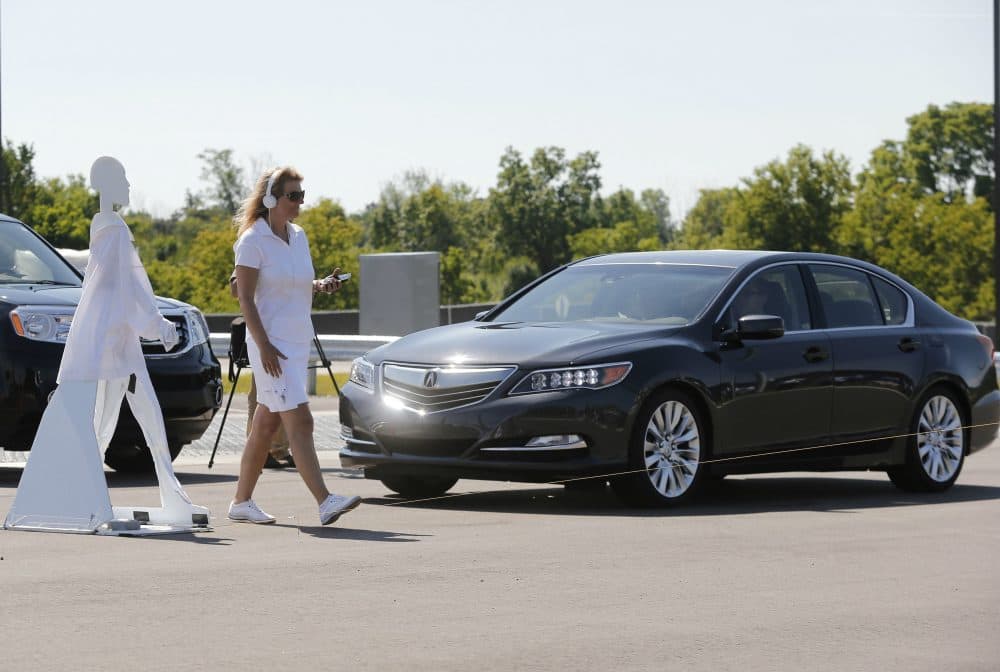Advertisement
The Ethical And Environmental Implications Of A Driverless Future

When Joshua Brown’s auto-piloted Tesla slammed into an undetected semitrailer in early May, it was a reminder of how far we are from grasping even the basics of driverless mobility. Car manufacturers and high-tech companies are working hard to convince us that the shift to driverless cars, a.k.a. “autonomous vehicles,” is inevitable. But will this technology be our gateway to a safer, more equitable, more environmentally sustainable transportation future?
Safety is one of the main arguments made by proponents of driverless cars. They hope to lower road fatalities below the current rate of one death for every hundred million miles driven. Getting a driverless car to respond intelligently to every possible road and traffic condition, however, is a huge computational challenge that also places an enormous ethical burden on programmers. Researchers pose daunting hypotheticals: A child runs out into the street after a ball, right in front of a driverless car. To dodge the child, does the car swerve onto a sidewalk where half-a-dozen people are waiting for a (driverless) bus? Does it veer into oncoming traffic? Are we willing to surrender these morally loaded, instantaneous decisions to a computer?
A child runs out into the street after a ball, right in front of a driverless car. To dodge the child, does the car swerve onto a sidewalk where half-a-dozen people are waiting for a (driverless) bus?
We also need to ask who will benefit and who will lose as driverless cars edge out other means of transport. Proponents argue that autonomous vehicles will offer greater mobility to people who don’t, can’t or shouldn’t drive — notably, under-age youth, the handicapped and the elderly. But these same populations may be better-served by on-call vehicle fleets with real people in the driver’s seat – people whose jobs would be among the hundreds of thousands lost once we shift to a driverless America.
And what will happen to the millions of Americans whose mobility needs are met by rail rather than road? In Boston, the MBTA’s subway and commuter rail lines carry roughly 800,000 riders per weekday. In New York, subway use alone stands at nearly 1.8 billion rides per year. Imagine the street-level traffic jams if a substantial portion of those riders switched to driverless vehicles. Engineers and programmers may be captivated by the prospect of creating a brave new world of driverless road transportation, but new rail systems will need to be built and old ones maintained if we are to succeed in keeping very large numbers of people moving safely and affordably in and around our cities. It’s called mass transit for a reason.
According to some analysts, a switch to driverless cars could strengthen our cities by smoothing out urban traffic flows. There is another, equally plausible scenario, though, where the ease of driverless travel will perpetuate or even expand car-dependent sprawl, with commuters able to sit back and enjoy the comforts of super-sized luxury vehicles, liberated from the bother of operating them.
Taking these and other variables into account, a team of experts at the National Renewable Energy Laboratory and the University of Maryland estimates that a wholesale shift to driverless vehicles could result in fuel savings of more than 90 percent, at one extreme, or a jump to 150 percent of current energy use at the other. Given America’s decades-long love affair with SUVs, it would be foolhardy to discount the latter possibility.
And what about the energy we would consume building and operating the onboard and remote computer technology needed for autonomous mobility? “We’re talking about an increase of many orders of magnitude in the amount of data crunching that would be involved,” says Arman Shehabi of Lawrence Berkeley Labs. Along with the operational energy demands, says his colleague Jeffery Greenblatt, we must consider the “embodied energy” of extracting the raw materials, manufacturing the components, and assembling all the detection and computational gear that will be required.
...we should give ethicists a bigger role in weighing the implications of this utterly transformative technology prospect.
Greenblatt also reflected on what the shift to driverless technology might mean for automotive industry profits. “Putting computers in cars means [car manufacturers will have] another 200 million moving objects that they can adorn with the latest gadgets.”
Understandably, car industry leaders see driverless vehicles as a way to create a new market for their wares in the decades ahead. It’s also easy to see why engineers and transportation planners are enchanted by the complexities of driverless mobility. But in addition to engaging all those shapers of our physical world, perhaps we should give ethicists a bigger role in weighing the implications of this utterly transformative technology prospect. Before ejecting drivers from our vehicles, we should pause and take a serious look at what would be gained and lost if we do.
